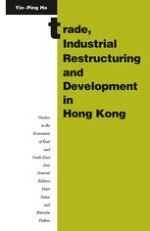1992 | OriginalPaper | Chapter
External Orientation and Patterns of Trade
Author : Yin-Ping Ho
Published in: Trade, Industrial Restructuring and Development in Hong Kong
Publisher: Palgrave Macmillan UK
Included in: Professional Book Archive
Activate our intelligent search to find suitable subject content or patents.
Select sections of text to find matching patents with Artificial Intelligence. powered by
Select sections of text to find additional relevant content using AI-assisted search. powered by
There is perhaps no better example of trade dependency and export propulsion than the economy of Hong Kong. With no mentionable natural resources, it has to import all industrial raw materials and fuels for its industry. With the exception of some fish and vegetables, practically all foodstuffs for local consumption as well as a substantial proportion of its water have to be imported.1 In respect of Hong Kong’s water supply, 70 per cent of water now consumed is imported from China (HK Governor, Address by the Governor 1988/89, p. 30). Beyond doubt, for virtually any increase in the domestic activities of production, consumption or investment in Hong Kong, increased export earnings for financing imports are an indispensable condition. Thus, Hong Kong can be characterised as an extreme case of a trade-constrained economy.2 Its growth and prosperity depend on its ability to export — be it merchandise or invisible exports; and the principal driving force behind its sustained economic growth for the past three decades was manufacturing for export.
